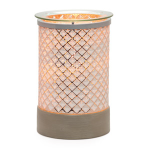As you consider ways to protect and enhance your property, you may be wondering if liquid roofing is the right choice for you. On one hand, it offers a flexible and durable solution that can withstand extreme weather conditions and even help reduce your energy bills. On the other hand, its application requires careful preparation and selection of compatible products to avoid peeling or delamination. With an initial investment ranging from $3 to $10 per square foot, you’re likely curious about the long-term benefits and potential drawbacks. What are the key advantages and disadvantages you should weigh when deciding if liquid roofing is the best fit for your property?
Benefits of Liquid Roofing Systems
Several benefits make liquid roofing systems an attractive option for building owners.
You’ll appreciate the flexibility they offer, as they can be applied to various surfaces, including concrete, metal, and asphalt. This versatility is especially useful when you’re dealing with complex roof designs or unusual shapes.
Liquid roofing systems are also incredibly durable, with some lasting up to 20 years or more. They’re resistant to extreme weather conditions, such as heavy rain, hail, and UV rays, which means you’ll have fewer maintenance and repair worries.
Additionally, liquid roofing systems are seamless, which eliminates the risk of leaks and water damage. You’ll also appreciate the energy efficiency they provide, as they can reflect heat and reduce your energy consumption.
Furthermore, they’re environmentally friendly, as they can be applied over existing roofs, reducing waste and minimizing the need for new materials. Overall, liquid roofing systems offer a range of advantages that make them an attractive choice for building owners like you.
Drawbacks of Liquid Roofing Solutions
While liquid roofing systems offer many benefits, they’re not without their limitations.
You’ll need to consider the potential drawbacks before making a decision. One major concern is the risk of peeling or delamination, which can occur if the liquid coating isn’t applied correctly or if the surface isn’t properly prepared. This can lead to a weakened roofing system and even water damage.
Additionally, liquid flat roof ing systems may not be suitable for all types of roofs, such as those with complex angles or multiple layers. You’ll also need to ensure that the product you choose is compatible with your roof’s existing materials.
Another limitation is that liquid roofing systems may not provide the same level of structural integrity as traditional roofing materials. You’ll need to weigh these potential drawbacks against the benefits to determine if a liquid roofing system is right for your property.
Cost and Budget Considerations
When calculating the overall cost of a liquid roofing system, you’ll need to consider more than just the initial investment.
The upfront cost of materials and labor can range from $3 to $10 per square foot, depending on the quality of the product and the complexity of the installation.
However, you’ll also need to factor in the cost of preparation, such as cleaning and priming the surface, which can add up quickly.
In addition to the initial investment, you’ll need to consider the long-term maintenance costs.
While liquid roofing systems are generally low-maintenance, they do require periodic inspections and repairs to ensure their effectiveness.
You’ll also need to budget for potential repairs or replacements down the line, which can be costly if not addressed promptly.
It’s also essential to consider the potential savings a liquid roofing system can provide.
By extending the life of your roof, you’ll avoid costly replacement costs, and the energy-efficient properties of many liquid roofing products can lead to significant reductions in your energy bills.
Suitability for Various Building Types
Liquid roofing systems are adaptable to various building types, making them a versatile option for property owners.
You can apply them to new constructions, retrofitting, or even historic buildings that require preservation of their original architecture. They’re suitable for flat, pitched, or curved roofs, and can be used on concrete, metal, wood, or asphalt substrates.
If you own a commercial property, liquid roofing can be applied to office buildings, shopping centers, hospitals, or schools.
It’s also an excellent choice for residential properties, such as apartments, houses, or condominiums. Additionally, liquid roofing can be used on industrial buildings, such as factories, warehouses, or power plants.
Furthermore, liquid roofing systems are ideal for buildings with complex roof geometries, like those with multiple levels, skylights, or vents.
They’re also suitable for buildings in high-traffic areas, as they can withstand heavy foot traffic and extreme weather conditions.
Regardless of your building type, liquid roofing offers a flexible and reliable solution to protect your property from water damage and extend its lifespan.
Environmental Impact and Sustainability
As you consider the benefits of liquid roofing, you’re likely wondering about its environmental impact.
Fortunately, liquid roofing is a relatively eco-friendly option. Since it’s a coating, not a replacement, it reduces waste and conserves resources.
Additionally, most liquid roofing materials are made from sustainable sources, such as plant-based polyurethane or recycled materials.
When it comes to sustainability, liquid roofing has a significant advantage.
With a lifespan of up to 20 years, it reduces the need for frequent replacements, which in turn reduces waste and conserves resources.
Moreover, liquid roofing can be reapplied over existing coatings, extending its lifespan even further.
In terms of energy efficiency, liquid roofing can help reduce energy consumption by reflecting solar rays and keeping your building cooler.
This reduces the load on your HVAC system, leading to lower energy bills and a reduced carbon footprint.
Conclusion
You’ve weighed the pros and cons of liquid roofing for your property, and now it’s time to decide. With benefits like flexibility, durability, and energy efficiency, it’s an attractive option. However, careful preparation and product selection are crucial to avoid common drawbacks. Consider your building type, budget, and environmental goals to determine if liquid roofing is right for you. By doing so, you’ll be able to enjoy the long-term cost savings and sustainability it has to offer.



